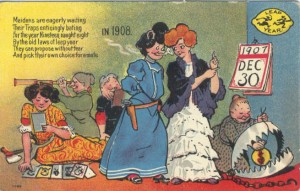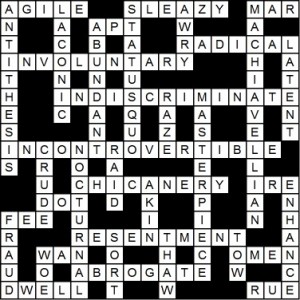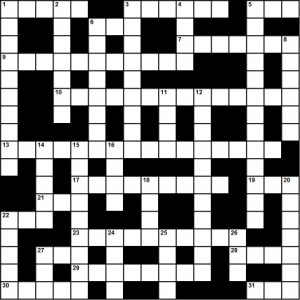For this week’s educational focus, I want to take a look at two tests that are important for American high school juniors and seniors: the SAT and the ACT. Both of these tests are college aptitude tests; that is, performance on one or both of these tests is said to give an indication how well the student can perform academically at the college or university level. As such, these tests are frequency used in the college admissions process, and students spend a lot of time (and sometimes, money) to prepare themselves for the test in order to get a good score. This week, we’ll focus specifically on the SAT.
The SAT is the older, and more well-known, of the two tests. The exam has undergone several changes since it was first administered in 1901, the most recent change occurring in 2005. Currently, the SAT consists of three parts, each part having a score ranging from 200 – 800 points: 1) Critical Reading, 2) Mathematics, and 3) Writing. Thus, a score of 2400 points represents a perfect score on the SAT. There are 10 sub-sections to the test, including an experimental 25-minute section that is not scored, but used for the purpose of planning new tests. The timed portions of the entire test make the test 3 hours and 45 minutes long, so the tests are given on Saturdays according to the schedule set by the Educational Testing Service (the company that administers the exam). Students who cannot take the test on Saturdays for religious reasons (for example, Jewish students) can apply to take a special make-up test.
Critical Reading
The Critical Reading section of the test (formerly, the Verbal section on older tests), consists of three scored sections: two 25-minute sections, and one 20-minute section. In this section, questions may be sentence completion questions, which serve to test the student’s vocabulary, and reading comprehension questions based on long or short reading passages.
Mathematics
The Mathematics section also consists of three scored sections: two 25-minute sections, and one 20-minute section. One of the longer sections has 20 questions, all multiple choice; the other 25-minute section has 8 multiple choice questions and 10 “grid-in” questions (questions where the student must calculate an answer and fill in the computer-readable blank). The final, shorter section has 16 multiple choice questions. The contents of the Mathematics sections are: number and operations; algebra and functions; geometry; statistics, probability, and data analysis.
Writing
The Writing section consists of a 35-minute multiple choice section and a 25-minute essay section. The multiple choice section tests the student’s ability to improve sentences and paragraphs, as well as identify errors (such as diction, grammar, sentence construction, subject-verb agreement, proper word usage, and wordiness). In the essay section, the student is expected to write an essay that develops a point of a view on an issue, and then use reasoning and evidence (based on personal experience, reading, or observation) to support his ideas. In his essay, the student should be able to organize and express ideas clearly, develop and support his main idea, as well as use appropriate word choice and sentence structure.
Scoring
As mentioned previously, scores on each section of the SAT range from 200 – 800 points. One thing that is unique about the SAT’s multiple choice questions is that responses are scored to minimize any benefit from random guessing. Multiple choice questions have five possible answers, and correct answers are awarded 1 point, whereas incorrect answers are penalized with a –1/4 point. Thus, if a student has absolutely no idea what the correct answer to a question is, he is advised to skip the question and leave it blank. On the other hand, if a student can eliminate even one of the possible answer choices, he improves his chances enough to overcome the negative 1/4 point penalty.
The negative point penalty applies only to multiple choice questions. Grid-in questions on the Mathematics section are not penalized for incorrect answers, and students are encouraged to make an educated guess if they do not know the answer.
The essay portion of the Writing section is scored on a scale of 1 – 6 (1: poor, 6: best), based on the overall quality of the essay. Two readers each give a score to the essay, so the essay’s total score can range from 2 – 12 points. Essays that are not written on the essay assignment, are blank, not written in English, not written with a Number 2 pencil, or are illegible, are automatically given a score of 0.
Originally, the test was scaled to make a score of 500 the mean on each section, with a standard deviation of 100. However, SAT scores have been steadily declining since the 1960’s: at its peak in 1963, the average SAT score was 980 (out of 1600); by the 1990’s, the average Verbal score was 428, and the average Math score was 478 – both well below the intended mean of 500 points. Consequently, in 1995 the test was “recentered” to bring the average score on each section back up to 500. Critics have pointed out that manipulating the scores like this masks the fact that compared to previous generations, today’s students are scoring poorly, and thus are not as well-prepared for college as their parents were.
Next week, we’ll take a look at the alternative to the SAT: the ACT.
Google





